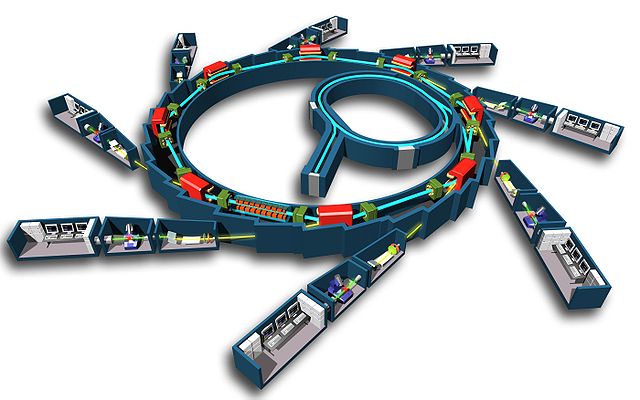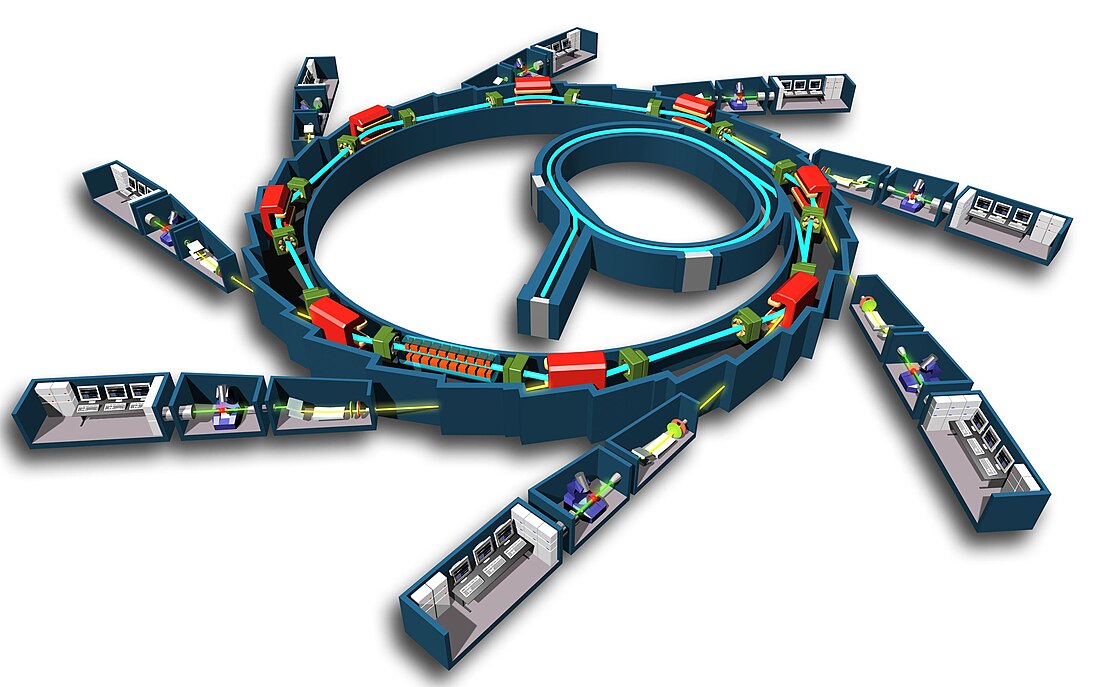Synchrotron
cyclic particle accelerator From Wikipedia, the free encyclopedia
Remove ads
A synchrotron is a type of particle accelerator where particles travel around many times in a circle. It uses a magnetic field to turn the particles in the circle and an electric field to speed up the particles. The components are carefully matched up with the travelling particle beam so that the circle stays the same size while the particles go faster. Mark Oliphant invented the proton synchrotron.[1] Vladimir Veksler was the first to publish the idea. Edwin McMillan constructed the first electron synchrotron.

The synchrotron is an improvement over the cyclotron where the particles travel in a spiral pattern. A cyclotron uses a constant magnetic field and a constant-frequency applied electric field. (One of these is varied in the synchrocyclotron). Both of these fields are varied in the synchrotron to change the path from a spiral to a circle. By carefully making the fields bigger as the particles gain energy, the width of the circular path can be kept the same as the machine accelerates the particles. This allows the vacuum chamber for the particles to be a large thin circular pipe torus (donut shape). It is easier to use some straight sections between the bending magnets and some bent sections within the magnets giving the torus the shape of a round-cornered polygon. A path that acts like a very large circle can be constructed using simple straight and curved pipe segments, unlike the disc-shaped chamber of the cyclotron type devices. The shape also requires the use of multiple magnets to bend the particle beams. Straight sections are required at spacings around a ring for both radiofrequency cavities, and in third generation setups space is allowed for insertion of energy extraction devices such as wigglers and undulators. Most synchrotrons use two types of magnets: dipole magnets to bend the particle beam and quadrupole magnets to focus the beam.
The maximum energy that a cyclic accelerator can impart is typically limited by the strength of the magnetic field(s) and the minimum radius (maximum curvature) of the particle path. So, over time, physicist have built accelerators with bigger magnets and larger circles to reach higher particle energy levels.

In a cyclotron, the maximum radius is quite limited as the particles start at the center and spiral outward. So, the entire path must be a self-supporting disc-shaped vacuum chamber. Since the radius is limited, the power of the machine becomes limited by the strength of the magnetic field. In the case of an ordinary electromagnet the field strength is limited by the saturation of the core (when all magnetic domains are lined up the same way, the field cannot not be further increased to any practical extent). The arrangement of the single pair of magnets the full width of the device also limits the economic size of the device.
Synchrotrons overcome these limits, using a narrow beam pipe which can be surrounded by much smaller and more tightly focusing magnets.
Remove ads
References
Other websites
Wikiwand - on
Seamless Wikipedia browsing. On steroids.
Remove ads
